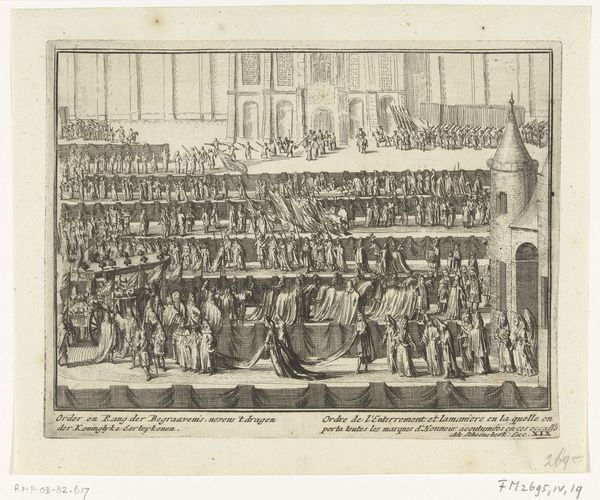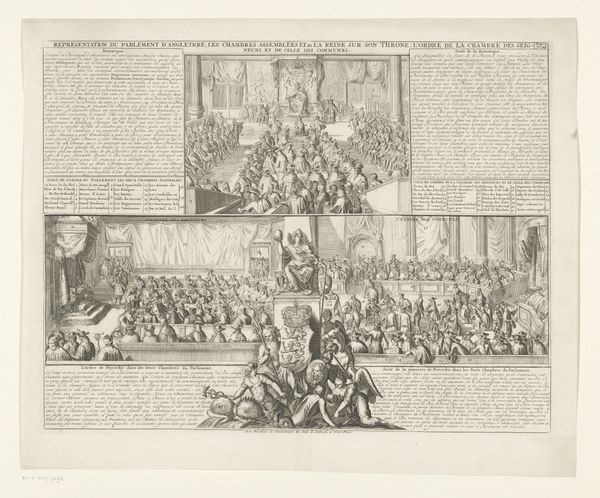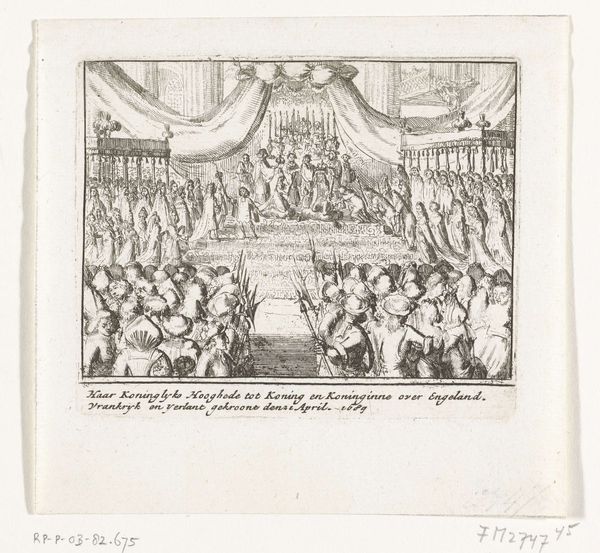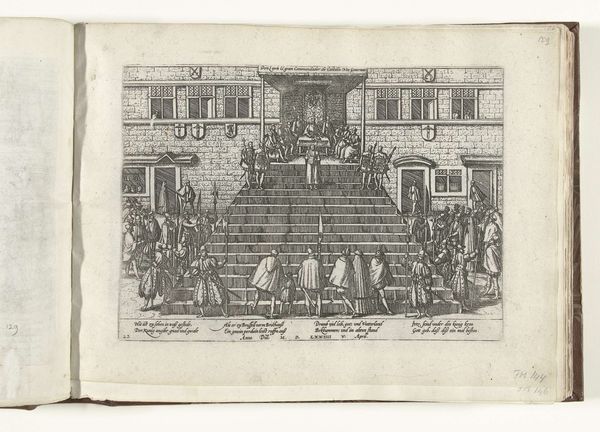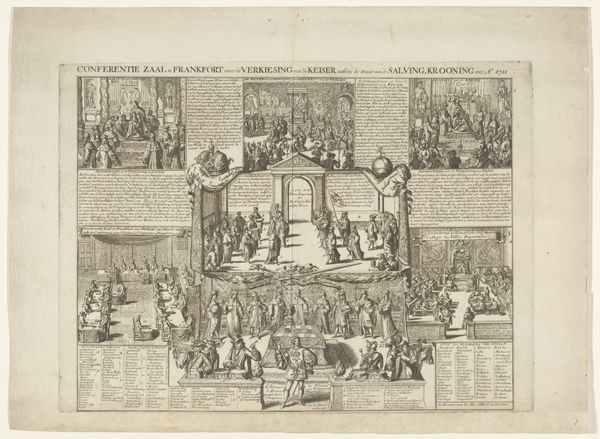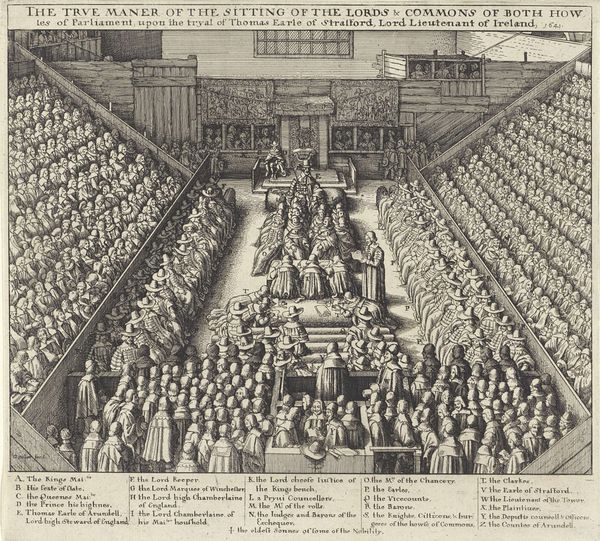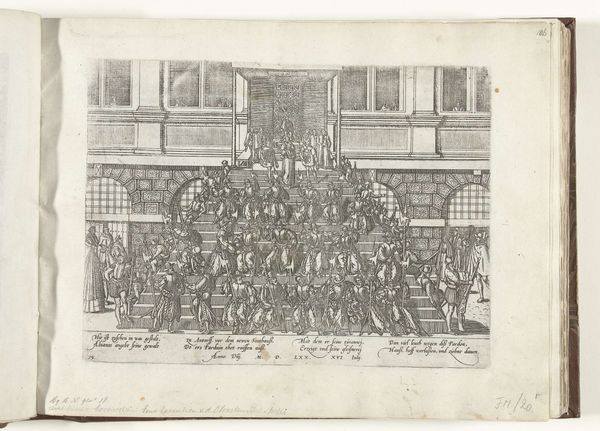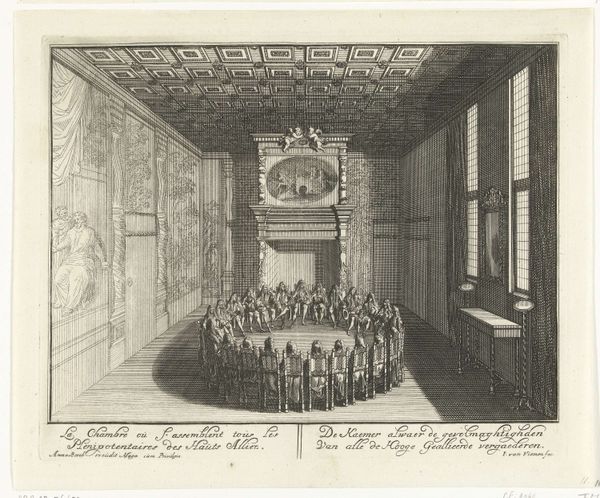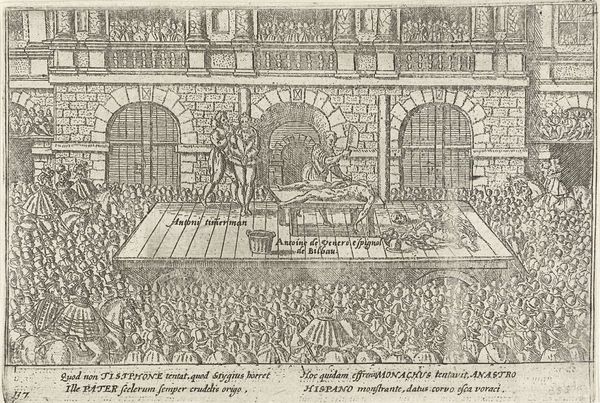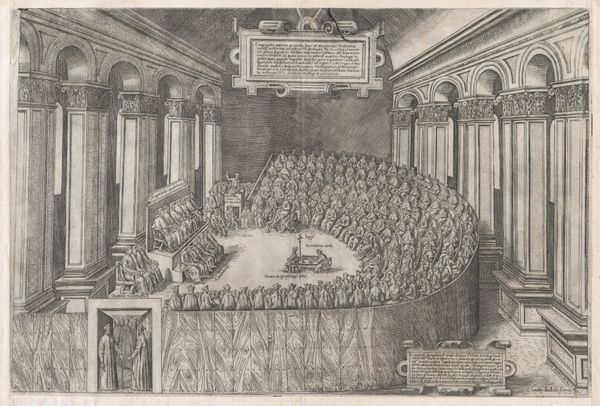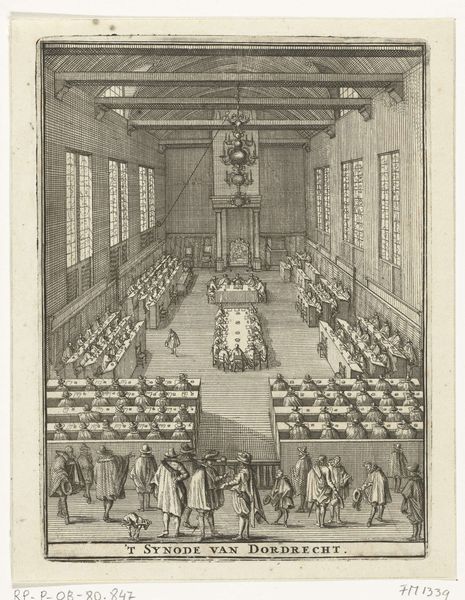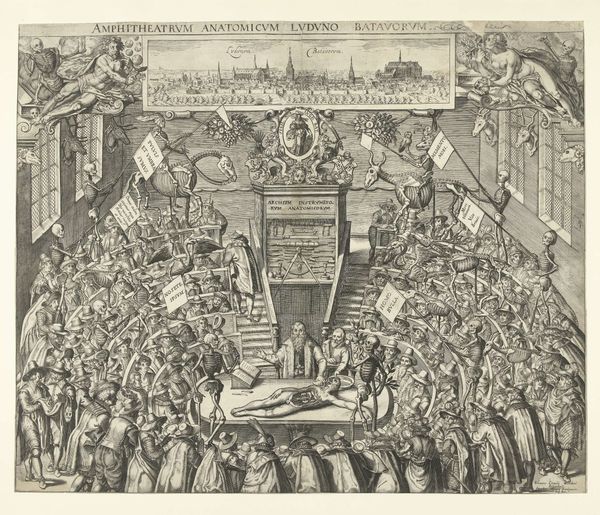
print, engraving
#
narrative-art
#
baroque
# print
#
old engraving style
#
figuration
#
line
#
cityscape
#
history-painting
#
engraving
Dimensions: height 135 mm, width 160 mm
Copyright: Rijks Museum: Open Domain
Curator: This print is entitled "Afkondiging van het Generaal Pardon, 1570," which translates to "Proclamation of the General Pardon, 1570," created sometime between 1613 and 1615 by an anonymous artist. Editor: It’s so densely packed with figures. A stark visual statement; look at how the line work renders texture—you can almost feel the roughspun cloth and cold steel. There is such precise rendering of what I see as a grim spectacle. Curator: Precisely. Consider the material conditions under which this image would have circulated. Prints like this allowed for the relatively inexpensive dissemination of political messaging and visual accounts of historical events to a wider audience. The use of engraving as a medium, with its emphasis on line, allowed for mass reproduction and distribution. Editor: You're right, it feels distinctly reproducible, even as I admire the artisan’s hand. Think about the social context. The proclamation itself was a gesture of attempted reconciliation following a period of intense political and religious upheaval, right? How was this print deployed; by whom; and where? It depicts a display of power intended to quell dissent. Curator: Exactly. The print's composition—with its centralized, elevated platform—emphasizes the authority of the ruling power. It transforms a political act into a carefully staged performance. It invites speculation on how the politics of imagery functioned during this pivotal period. The building itself becomes another participant. Editor: The act of consumption must have played a part in understanding how it played with notions of ‘justice.’ Look how high those figures have to climb; perhaps the labor in that climb reflects the difficulty of securing a pardon. A complex visual statement regarding societal labor, in many senses. Curator: Absolutely. And the choice of engraving, with its relative permanence, suggests an intention to fix this moment in the public imagination. It goes beyond simple craft production; instead it uses technique to amplify social ideas. Editor: Indeed. Thinking about materiality has provided an insight into understanding history—thanks. Curator: Likewise, considering the print as a carefully orchestrated social performance helps us to rethink the artifice of historical record.
Comments
No comments
Be the first to comment and join the conversation on the ultimate creative platform.

